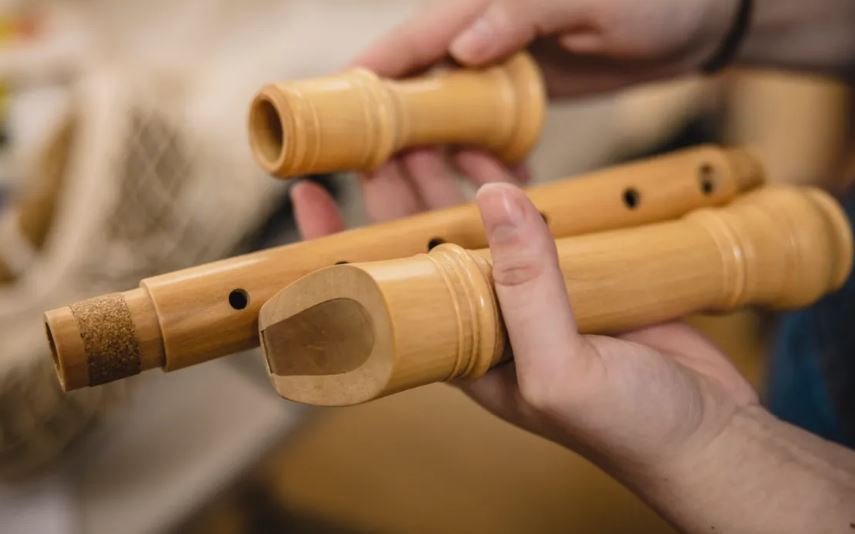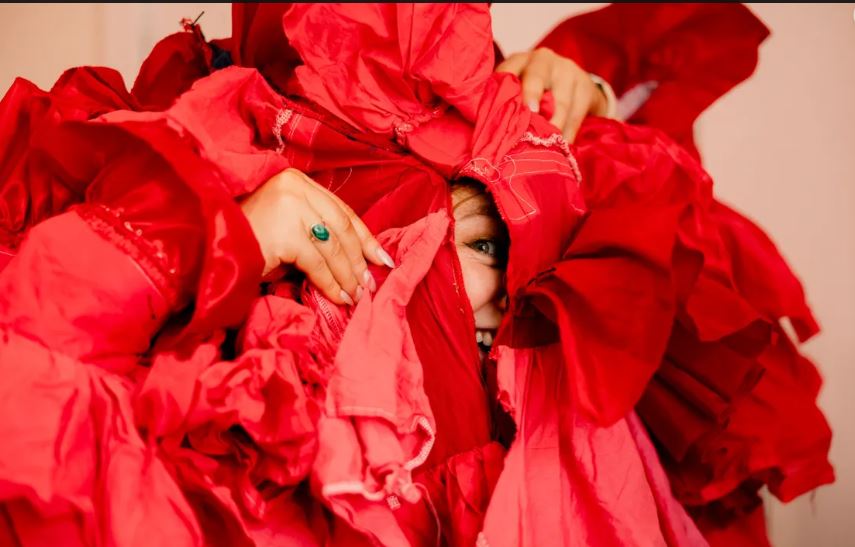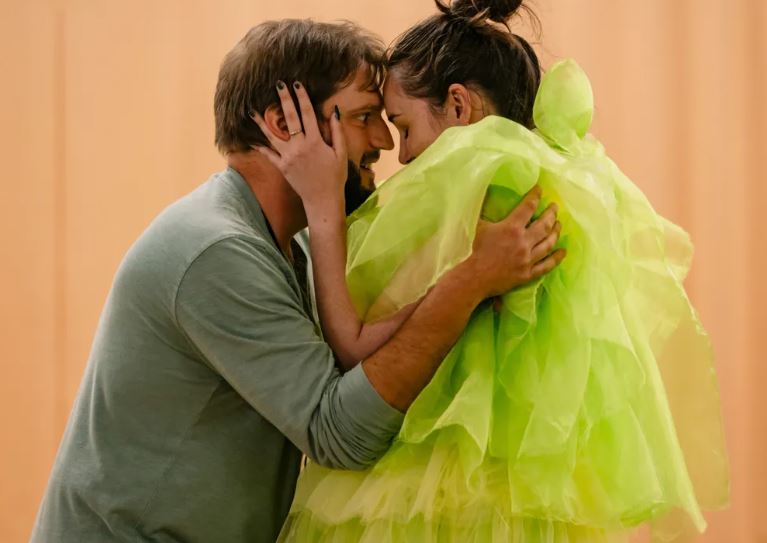The Magic Flute
Essex Spells
The Magic Flute
by Wolfgang Amadeus Mozart, libretto by Emanuel Schikaneder
Wild Arts, the Essex Summer Opera Festival, at Layer Marney Tower, Essex until 23rd June, then on tour until 22nd September
Review by Mark Aspen
Mozart was of course a bit of a rebel. Die Zauberflöte was more or less the last opera he wrote before his untimely death in 1791 and this, his The Magic Flute, could be seen as a final act of rebellion. It was a fairy tale with a lot of spoken dialogue, rather than grand opera. It was written in German, not the courtly Italian, the language in which almost all his previous operas (apart from those he composed as an adolescent) were written. It moved away from the grandeur of Emperor Joseph II’s court, towards the showman Emanuel Schikaneder. It was not premièred in the imperial heart of society Vienna, but in the Freihaus Theater, in the definitely down-market Wieden district of Vienna, near the Wurstelprater, a public amusement park, still there today as the Prater.
It seems fitting then that Wild Arts is presenting its production of The Magic Flute in English, away from the grand opera houses in London, in the far-flung ends of Essex where the landscape dissolves in a web of rivers and estuaries. Not that Layer Marney Tower is down-market; far from it. It is a handsome grand Tudor manor house. This is country house opera in a charming location and at its most delightful. On what seems to be belated opening days of summer, the ambience of white lawn tablecloths and green lawn swards leading the eye across the wide visas of the Blackwater estuary and going on for ever, is enchanting.
Everybody, and every musicologist, reads different stories into The Magic Flute, interpreting it as freemasonry, moral allegory, or religious conflict. Certainly, all this is interwoven in the plot, yet it is intended to be fun and to be enjoyed as fun. It is, nevertheless, a tale of good versus bad, but at the outset the question is, which is which? All the characters are ambiguous in motive and in action. It is a credit to the cast that all accept their characters for what that are and inhabit them with empathy.
The set is simple, as befits a production due to travel to nineteen destinations as far apart as Herefordshire and Potsdam, and repping it with a dramatised recital in a further twenty wide-flung venues, in a punishing schedule. This is a company with stamina!
Designer Sophie Lincoln is a textile expert, as can be appreciated in the wonderfully colourful and eclectic costumes. Although having the appropriate pack-up-and go utility, the set is impressive. It comprises a tented drape above the stage, reminiscent of the Karl Schinkel’s iconic 1816 design that has become forever associated with the Queen of the Night, the midnight-blue starcloth. The stage is underlit by an LED rope-light in a perfect circle. The symbolism is subtle but strong, the overweening presence of The Queen of the Night hovering ubiquitous, against the enlightenment sought by her nemesis Sarastro, the High-Priest of Isis and Osiris.
The overture gives opportunity to outline the backstory as a dumb-show. A circle of golden cloth, the disc of the sun symbolising ultimate power, is fought over by The Queen and Sarastro. Her late husband, as King, has bequeathed it in trust to Sarastro. The Queen passionately believes it should be hers, but Sarastro intends it for Pamina, her daughter, who lies asleep beneath the struggling pair. The disc is rent in half. Here, exceptionally the acting does not over distract from Mozart’s often-performed overture, bright and spirited.
The monstrous creature that pursues Prince Tamino at the outset is not the customary giant serpent. He is attacked on three surrounding blood-red beasts, but when he faints in fright, they transmogrify into The Three Ladies, clad in scarlet taffeta skirts. In this production, The Three Ladies sweep in the Three Spirits, most often played by boy trebles, and some minor roles, into a much more involved presence and steering the action. They are played by soprano Eleanor Oldfield and mezzo-sopranos Martha Jones and Abbie Ward, working in unity with, and off of, each other. Their trios sparkle in carillon-like precision, absolutely charming.
These Three Ladies are used to consolidate many aspects of the plot and, together with their absorption of the roles of the Spirits, makes for a more compact version, which, with the omission of some interlude passages, cuts almost a half-hour from the full running time.
Director James Hurley has enhanced this economy of presentation in a number of ways, including reducing the stage props to eight small stools, which can be rearranged to be anything from a rocky gorge to Sarastro’s temple. There are some very nicely effective touches. When the priests once more enjoin Tamino from talking, the concept is tested by all falling silence, including the orchestra, for what seems to be a dozen bars. Also, in The Queen of the Night’s famous aria, her highest notes act to stun Pamina and the Three Ladies such that they fall back transfixed. These are small actions but they have impact.

Tamino strikes one as being rather compliant for a prince, but he is one who is trying to please, plus of course he has fallen in love with Pamina’s portrait, so everything is seen through rose-coloured specs. Richard Dowling’s portrait of Tamino is of a personable and earnest young man trying to do his best. His ringing tenor voice has a clarity that reflects this portrayal. Here is a man heroic by dint of his nobility of spirit.
Papagano is by contrast a reluctant hero, becoming such in spite of himself, by force of circumstances. He is everyman, who only really wants in life are something to eat and drink, and someone special to love and share his life. Seeing this production a few days after the special D-Day commemorations, one is reminded of those young conscripted soldiers who found themselves under-fire in Normandy eighty years ago. Except that is too sombre, for Papagano is the source of the comedy in The Magic Flute. Schikaneder, the librettist, snaffled this role for himself in its earliest performances, knowing his audience and knowing he could play it for laughs. Our Papagano, Kathleen Ferrier Award winner Gareth Brynmor John has great fun with the part, and clearly relishes it. The role is a gift in the right hands, and Brynmor John’s are the right hands. His initial entrance has an impressive directness and honesty laced with urgency, with his straight-to-the-point introduction of himself as the brirdcatcher, in his famous aria Ein Vogelfänger bin ich ja. (The libretto is sung in English in a translation by Jeremy Sams that well catches the mood of the original.)
Papagano has quite a lot of well-known arias, mainly round his plaintive search for a girlfriend to be his wife. Encompassing them all with alacrity, Brynmor John has a rounded baritone voice which is totally engaging.
Tamino and Papagano’s first encounter with The Queen of the Night is fairly positive and leads to them being gifted with the magic flute and magic bells, but it is not long before we get the measure of her ambitions to power. Luci Briginshaw makes a scary Queen of the Night; her flashing eyes alone would make most of us quake. Briginshaw is a remarkable performer and a flawless singer. We last saw her in the title role in Mozart’s Constanze and she would do Constanze proud in this celebrated role of Mozart’s. And The Queen of the Night’s most celebrated aria must be her Hölle Rache, calling on hell’s vengeance as she demands her daughter Pamina to murder Sarastro. With its demanding of an enormous vocal range and very high tessitura, it is a challenging piece for any soprano to perform, yet Briginshaw performs it with consummate ease. Her high F’s really have that tingle factor.
Does The Magic Flute have the greatest vocal range of any opera? (Answers please on a postcard.) If The Queen of the Night’s high F’s fly off into the staves into the sky, Sarastro’s low F’s plunge down into the deep, particularly in his prayer to Isis and Osiris to protect Tamino and Pamina. In this production, perhaps the only reference to the ancient Egyptian background is the costumes of the priests, in the sandy creams and buff of the desert, which are quite striking. In the role of Sarastro, Canadian lyrical bass Trevor Eliot Bowes has great stage presence, albeit a tad stern. His wonderfully rich singing voice is treacle smooth, perfect for the character.
In the rather loveless role of Monostatos, tenor Ben Thapa imbues Sarastro’s errant servant with suitable creepiness as he tries repeated to ravish Pamina, who is confined in his charge. He and his henchman wear clown-like orange suits and under his mask he has a blackened eye. Thapa has great physicality and enlivens what could be a very heavy part.
As the abused Pamina, soprano Natasha Page expresses the innocence and vulnerability of the young woman, who is really used a pawn in the struggle between The Queen and Sarastro. Pamina’s singing opportunities are largely in trios and quartets, but she has a very tender aria when Tamino cannot speak to her because of his vow of silence and she believes he no longer loves her. Page brings out its pathos with heart-rending sincerity.
Papagano’s love interest Papagana is in contrast a comedy role and Eleanor Sanderson-Nash brings a gentle light touch. She first appears as the old lady whom Papagano teases, dressed unflatteringly in a hessian sack. What a transformation as she then reappears in a frou-frou of lime-green chiffon to have great fun with the P-p-p-p patter song with Papagano, her bubbly soprano declaring their love, looking forward to their future life together, and lots of children!
Before the house opened for The Magic Flute, we were treated to an hors d’œuvre out in the sunshine. Third Lady, Abbie Ward was joined by fellow Wild Arts Young Artists 2024, Henry Wright and Lachlan Craig for a short recital, accompanied on the piano by Satoshi Kubo, one on the repetiteurs. Tenor Lachlan sang Silent Noon, Dante Gabriel Rossetti’s romantic love poem, set to music by Ralph Vaughan Williams. Baritone Henry Wright contributed two pieces by Gustav Mahler, Frühlingsmorgen and Liebst du um Schönheit.
Abbie Ward’s lovely mezzo was exhibited in Lindenbaum, a passage from Schubert’s Winterreise; and then, in a complete change of mood, from Bizet’s Carmen, the Seguidilla, sung with great verve and passion. The men’s romantic pieces showcased their ability to really act the part, as we were to see in The Magic Flute, Wright as The Speaker and as a Priest, Craig as a Priest.
One of the joys of this production is its chamber orchestra, which is integrated as one with the company, and is situated right alongside the stage. The ten players are versatile musicians who thoroughly enjoy the piece. Its greatest asset is Musical Director, Orlando Jopling, its conductor. Jopling, who has wide and varied experience in concert, opera and ballet, is one of the prime movers in Wild Arts and is its Artistic Director. Jopling keeps the work lively and bright, without losing any of its high drama. Mozart’s clever twists and turns and unconventional changes of direction are all there, and in spite of arrangements to allow for the cuts in the action as well as the size of the orchestra, nothing is lost. And in an orchestra without a flute, whence comes the sound of the eponymous magic flute, which plays itself on stage? Probably from Rowan Jones’ basset horn, or did she double with a recorder?
The Essex Summer Opera Festival, which is Wild Arts’ baby, has The Magic Flute as only one of its offerings, and there are plenty of opportunities to see it on tour. The opera is the jewel of this year’s Festival, but its enchantment is enhanced, however, by the beguiling setting in what must be one of most beautiful venues in Essex. With an exceptional company, Mozart’s wonderful music, played with verve by orchestra and singers, and in such a charming place, this Magic Flute is, well … magical!
Mark Aspen, June 2024
Photography courtesy of Wild Arts



Trackbacks & Pingbacks